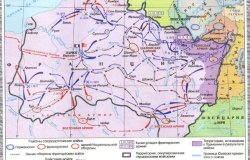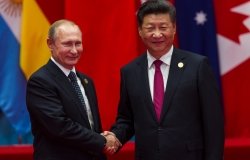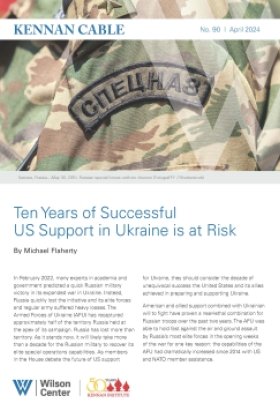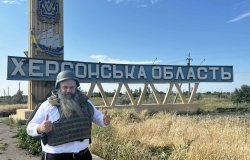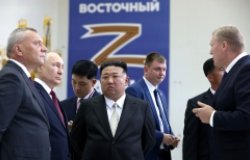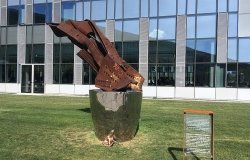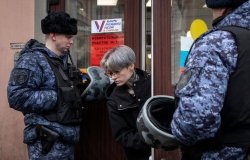Stalin and His Inner Circle
Vladimir Shamberg, independent scholar, Alexandria, VA
Overview
At a recent Kennan Institute talk, Vladimir Shamberg, independent scholar, Alexandria, VA, discussed Joseph Stalin and his "inner circle" of close associates who helped him rise to power and occupied high positions in the Communist Party and the government of the Soviet Union. Shamberg argued that even as a relatively minor Communist leader, Stalin built up a circle of trusted supporters. Different people comprised this inner circle during different periods of Stalin's political career—several members were killed or imprisoned during his tenure as leader of the Soviet Union—but Stalin maintained an inner circle in some form until his death in 1953.
According to Shamberg, in the early years of the Soviet Union, Stalin's inner circle included Viacheslav Molotov, Lazar Kaganovich, Kliment Voroshilov, Sergei Kirov, Valerian Kuibyshev, and Andrei Zhdanov. Shamberg argued that none of Stalin's rivals saw him as a likely successor to Lenin as leader of the Communist Party because of his relatively low position in the Party hierarchy and his very minor role in the October 1917 Revolution. However, Stalin was able to come to power through the support of his inner circle. He turned the Central Committee of the Communist Party into a powerful body and gradually began to fill it with his supporters. The process of removing all potential rivals from the Central Committee was only completed in 1939 after a decade of purges, Shamberg said.
Shamberg devoted special attention to the role of Georgii Malenkov, whom he knew personally during the 1940s and 1950s. Malenkov, according to Shamberg, was a new addition to Stalin's inner circle in the late 1930s. Malenkov is largely ignored in recent analyses of the Stalinist period, largely because Nikita Khrushchev—who was an intimate friend of Malenkov—wrote in his memoirs that Malenkov was a mere "errand boy" for Stalin. Shamberg, however, argued that Malenkov was an intelligent man, a skilled manager, and played an important role in Stalin's government. Shamberg also noted that Malenkov was the first top Soviet official to recognize that nuclear war would destroy all of world civilization.
In the later years of Stalin's rule, there was considerable scheming within the Communist Party to position people as potential successors for the aging dictator. According to Shamberg, there were two major factions—the Moscow group, which included Malenkov and Lavrenti Beriia, and the St. Petersburg group, which included Zhdanov, Nikolai Voznesenskii, and Aleksei Kuznetsov. The St. Petersburg group was able to get Malenkov relieved of his duties as Secretary of the Central Committee in 1946, but he was reinstated as Secretary in 1948, in Shamberg's view because he was simply a better manager than Kuznetsov and Zhdanov. When Zhdanov died in 1948 the Moscow group was able to take the upper hand, and Malenkov appeared to be in the best position to succeed Stalin. In 1952 during the 19th Party Conference, Stalin for the first time semi-officially institutionalized his inner circle, according to Shamberg. The group, called the "Leading Five" included Stalin himself, Malenkov, Beria, Khrushchev, and Nikolai Bulganin. These four were Stalin's constant companions until his death in 1953, according to Shamberg.
Hosted By

Kennan Institute
The Kennan Institute is the premier US center for advanced research on Russia and Eurasia and the oldest and largest regional program at the Woodrow Wilson International Center for Scholars. The Kennan Institute is committed to improving American understanding of Russia, Ukraine, Central Asia, the Caucasus, and the surrounding region though research and exchange. Read more
Thank you for your interest in this event. Please send any feedback or questions to our Events staff.

